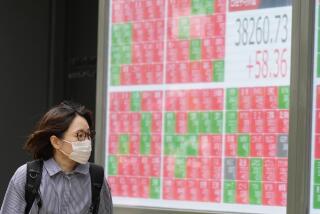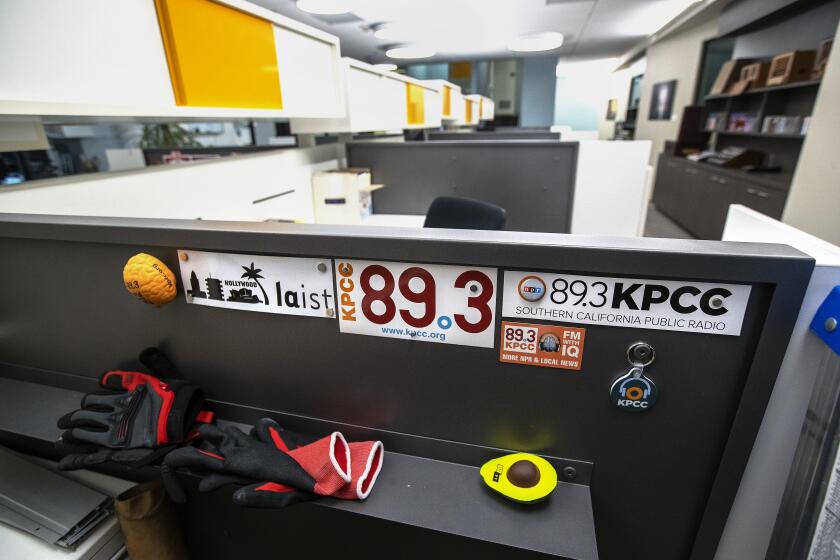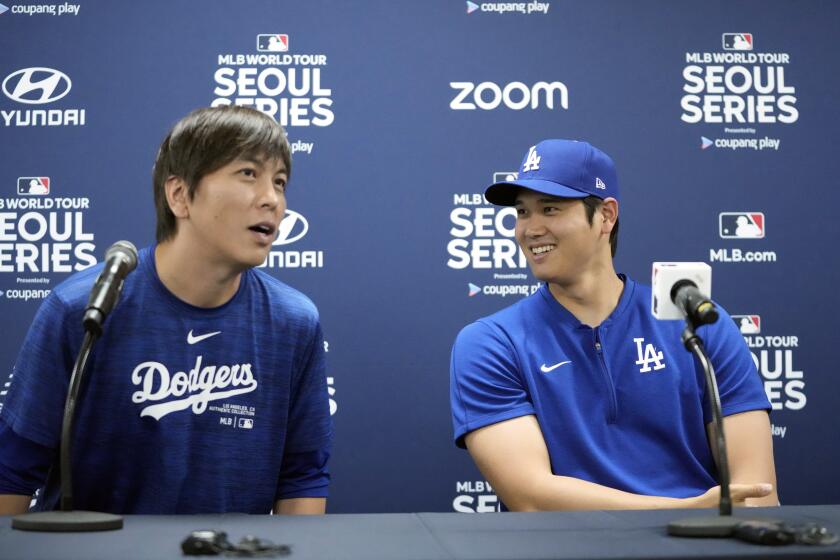Vintners Courted as Wine Sales Flourish
As Americans purchase more and more wine, something else is attracting plenty of eager buyers: California vintners.
This year, three major wineries have been snapped up -- two in the last few weeks alone. The trend, analysts say, is being driven in large part by a sharp increase in U.S. wine consumption and the likelihood that consumers’ tastes for all sorts of reds and whites will keep growing.
“We are seeing a lot of people discovering wine and making it an everyday beverage rather than saving it for special occasions,” said Tiziana Mohorovic, an analyst at Adams Beverage Group.
Among the reasons: a proliferation of inexpensive wines from both California and Australia; the greater availability of fine vintages at discount prices from retailers such as Costco and Target; and a budding interest in wine by people in their 20s.
Even Hollywood is raising its glass. “Sideways,” the story of two buddies searching for wine and women amid the vineyards of Santa Barbara County, is a box-office success and Oscar contender.
In all, Americans are now consuming upward of $22 billion of wine annually. Only the French and Italians consume more wine than people in the U.S., according to the Wine Institute, the trade association for California’s vintners.
Last year, U.S. wine consumption rose 5.2% -- its biggest surge since 1996. At the same time, beer drinking fell 0.3%, Mohorovic said. And when the numbers are in for this year, she expects wine to post at least a 4% gain, once again outpacing other alcoholic beverages.
In turn, the companies that produce some of California’s most famous wines are fetching top prices.
On Monday, London-based Diageo confirmed a report in The Times that it would purchase Napa Valley’s Chalone Wine Group Ltd. for $195 million plus the assumption of $65 million in debt. That’s a 66% premium over the value of Chalone back in May, when it first started to consider offers for the company.
Meanwhile, Constellation Brands Inc., the world’s largest winemaker, is set this week to close its $1-billion purchase of Napa’s iconic Robert Mondavi Corp.
In April, Golden State Vintners Inc., also based in Napa, accepted an $82-million buyout by Wine Group of San Francisco.
“One by one, these companies have been picked off, and they have made pretty good money for their investors,” said Jon Fredrikson, head of Gomberg, Fredrikson & Associates, a Woodside, Calif., wine industry consulting firm.
The key to future prosperity for these businesses, of course, is a continued increase in wine consumption.
Experts believe there is plenty of upside to be uncorked.
Though U.S. consumption is at an all-time high, just 12.5% of adults drink 86% of the wine purchased in America, according to the Wine Market Council, a trade group. Last year, the average American of drinking age consumed about 3 gallons -- roughly 15 standard bottles -- of wine. By comparison, Italians drink about 70 bottles annually on average, and the British tipple about 23.
The challenge for the industry will be to persuade those Americans who don’t drink wine regularly to consume a glass or two each week.
“For wine to grow, it has to be able to compete with beer or fancy sparkling water as a beverage consumed with dinner,” said Andrea Immer, dean of wine studies for the French Culinary Institute in New York. “That means it has to have a competitive price.”
Historically, the industry’s marketing approach has been to portray wine as something that is both expensive and exclusive. Slowly, though, that’s been changing.
The advent of wines such as the $1.99 Charles Shaw label sold at Trader Joe’s -- affectionately known as “Two-Buck Chuck” -- and the ubiquitous $6.99 Yellowtail brand from Australia has contributed to lower wine prices and is reorienting the industry’s marketing efforts.
For their part, certain high-end wines also are doing quite well these days.
Ray Chadwick, president of Diageo Chateau & Estate Wines, noted that vintages that sell for $10 or more in supermarkets enjoyed an 8% increase for the year ended Oct. 31.
“Everything we see says that consumers are drinking more wine,” said Chadwick, whose company also owns such rival alcoholic products as Smirnoff vodka and Guinness beer.
In the deal announced Monday, Diageo said it would pay $14.25 a share for Chalone, which owns Acacia, Chalone, Provenance and several other wineries.
The offer price was 50 cents a share more than first reported. Chadwick said the extra money was “what it took to close the deal.”
The Diageo bid was also $2.50 a share more than a competing offer from a group that included Domaines Barons de Rothschild and Constellation.
Mohorovic noted that previously, young adults entering drinking age tended to reach for a beer. Now, they are increasingly sampling wine, and there are some data showing that men in their 20s are especially fond of red wine.
In the end, though, the industry has a long way to catch up. Although beer consumption is down a bit, American adults still knock back almost 31 gallons of brew annually. That’s 10 times the amount of wine that’s drunk.







